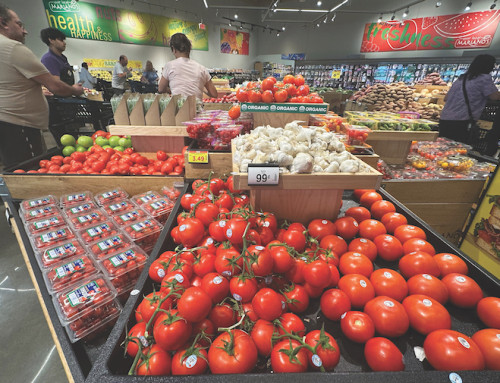OMAHA, Neb. (AP) — Anyone firing up the grill this summer has probably noticed that hamburger and steak prices have climbed to record highs and analysts say consumers shouldn’t expect much relief soon either.
The average price of a pound of ground beef rose to $6.12 in June, up nearly 12 percent from a year ago, according to federal government data. The average price of all uncooked beef steaks rose 8 percent to $11.49 per pound.
Beef prices have been steadily rising over the past 20 years because the supply of cattle remains tight while beef remains popular.
In fact, the nation’s cattle herd has been steadily shrinking for decades.
As of Jan. 1, the country had 86.7 million cattle and calves, down 8 percent from the most recent peak in 2019. That is the lowest number of cattle since 1951, according to the U.S. Department of Agriculture.
Many factors, including drought and cattle prices, have contributed to that decline and now the emergence of a pesky parasite in Mexico and the prospect of widespread tariffs may further reduce supply and raise prices.
The American beef industry has improved at breeding larger animals, so ranchers can provide the same amount of beef with fewer cattle, said David Anderson, a livestock economist at Texas A&M.
Then in 2020, a three-year drought began that dried out pastures and raised the cost of feed for cattle, according to the American Farm Bureau.
Drought has continued to be a problem across the West since then, and the price of feed has put more pressure on ranchers who already operate on slim profit margins.
In response, many farmers slaughtered more female cattle than usual, which helped beef supplies in the short term but lowered the size of future herds. Lower cattle supplies have raised prices.
In recent years cattle prices have soared, so that now animals are selling for thousands of dollars apiece. Recent prices show cattle selling for more than $230 per hundredweight, or hundred pounds.
Those higher prices give ranchers more incentive to sell cows now to capture profits instead of hanging onto them for breeding given that prices in the years ahead may decrease, Anderson said.
“For them, the balance is, ‘Do I sell that animal now and take this record high check?’ Or ‘do I keep her to realize her returns over her productive life when she’s having calves?’” Anderson said. “And so it’s this balancing act and so far the side that’s been winning is to sell her and get the check.”
The emergence of a flesh-eating pest in cattle herds in Mexico also has put extra pressure on supply because officials cut off all imports of cattle from south of the border last year.
About 4 percent of the cattle the United States feeds to slaughter for beef comes from Mexico.
The pest is the New World screwworm fly, and female flies lay eggs in wounds on warm-blooded animals. The larvae that hatch are unusual among flies for feeding on live flesh and fluids instead of dead material.
American officials worry that if the fly reaches Texas, its flesh-eating maggots could cause large economic losses as they did decades ago before the U.S. eradicated the pest.








